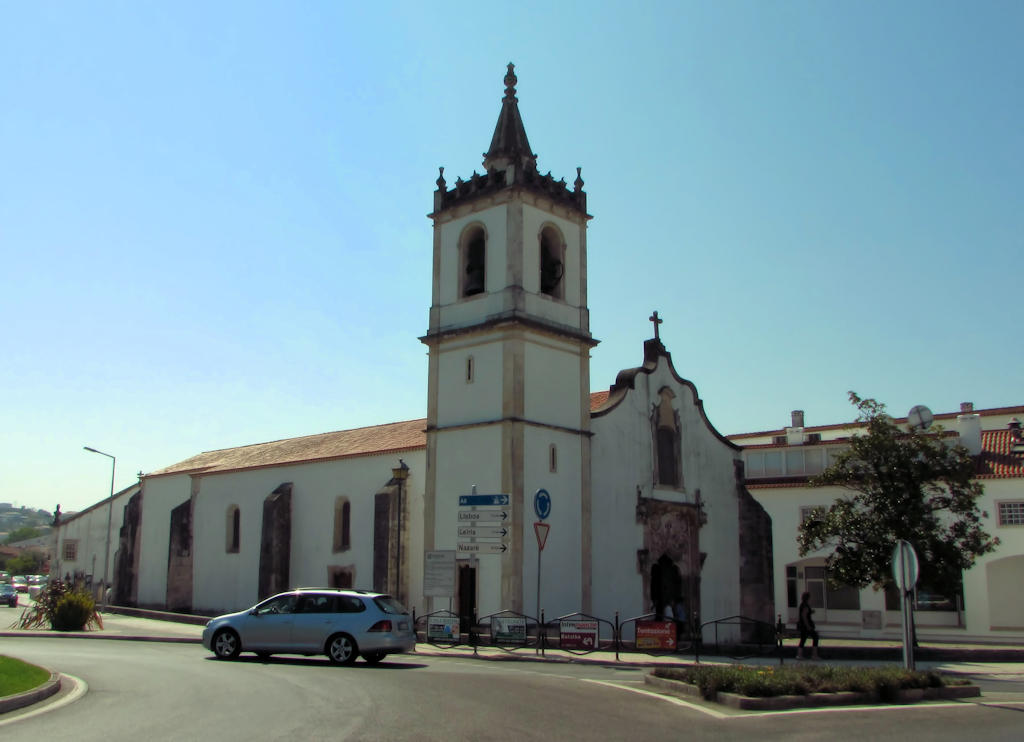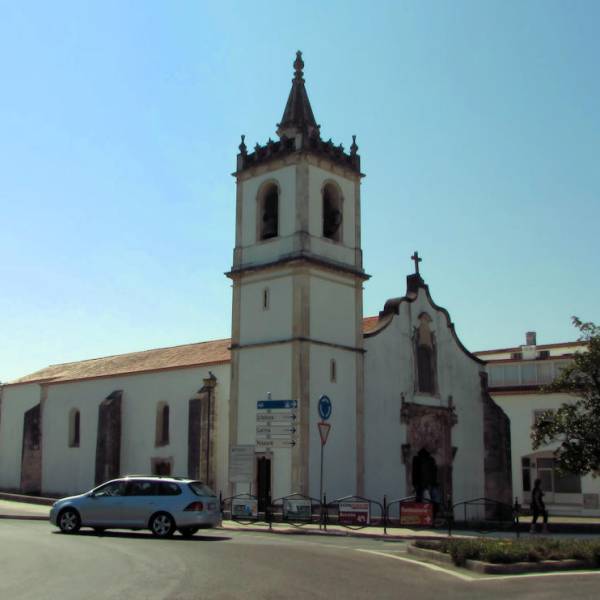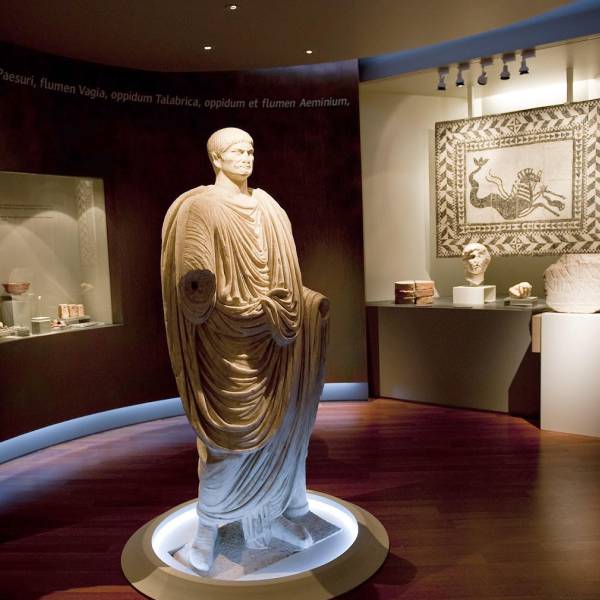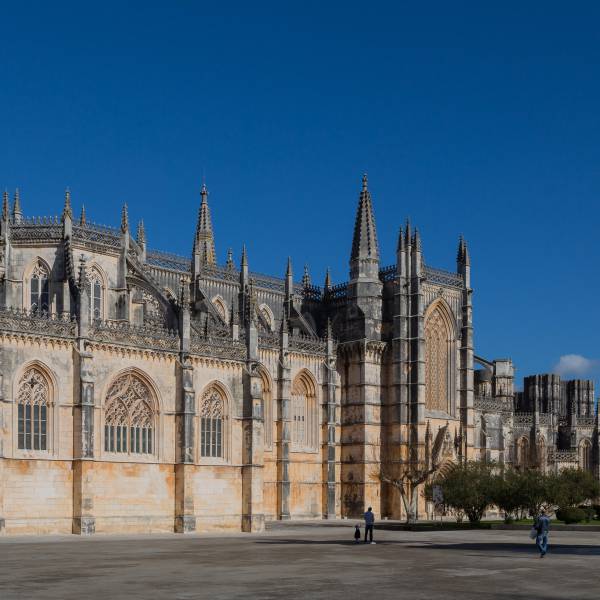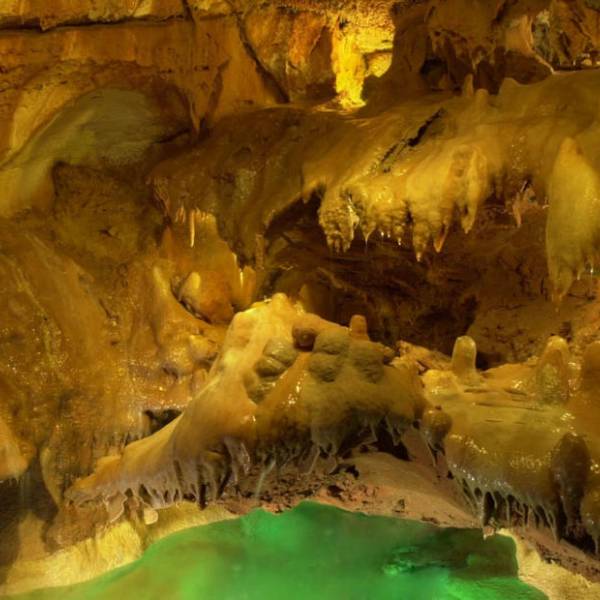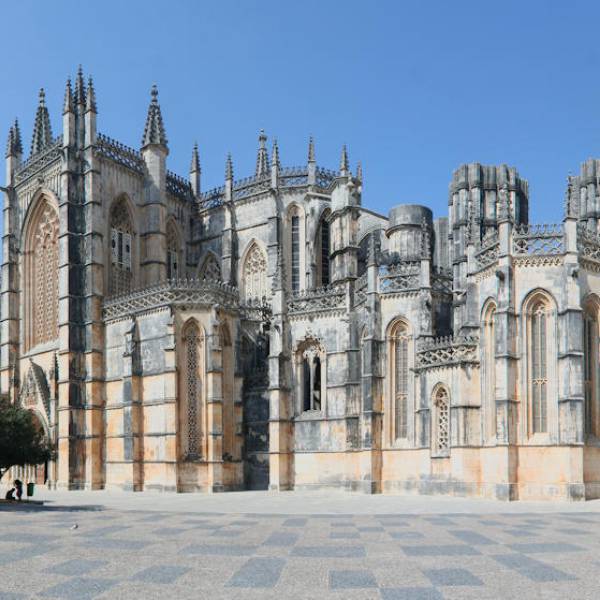The Igreja da Exaltação de Santa Cruz in Batalha is a recommended day trip from Lisbon due to its close proximity and rich cultural significance. Visitors can admire the stunning Manueline architecture and immerse themselves in the historical heritage of this captivating church.
The architecture of the Igreja da Exaltação de Santa Cruz is heavily influenced by the Manueline style, which is characterized by intricate and elaborate ornamentation. The Manueline elements are most evident in the main portal of the church. The portal features a highly decorated polychromatic arch framed by facetted columns with vegetal capitals. The entire structure is adorned with decorative bands featuring grutescos, a type of ornamental motif popular in the Manueline style. The tympanum of the arch is composed of a trilobed design with various decorative elements such as foliage, finials, and pinecones. Two national symbols, the cross of the Order of Christ and the armillary sphere, are sculpted on the sides of the portal.
Above the portal, there is a large Baroque-style window with a curved pediment and a cut-out gable. The bell tower, situated to the left of the main façade, consists of three levels separated by friezes and cornices. The first level has a small opening, the second level is blind, and the third level has open arches for the bells. The northern façade of the tower features a polylobed portal on the first level, which provides access to the choir and the bells, and a small opening on the second level. The tower is crowned with a balustrade adorned with fleur-de-lis motifs and a pyramidal spire. It is worth noting that this tower is relatively recent, dating from the renovations carried out in the 1930s.
Inside the Igreja da Exaltação de Santa Cruz, several notable features can be found. The crossing arch and the ribbed vault of the chancel are original elements that have survived from the initial construction. The church also houses an intricate stone altarpiece with polychromatic marble and a baptismal font, both of which were brought from the Mosteiro da Batalha in the past century. Additionally, the church incorporates azulejos, traditional Portuguese ceramic tiles, on the frontal and the pilasters, which were reused from the Monastery of Nossa Senhora de Ara Coeli in Alcácer do Sal.
Lisbon.vip Recommends
Today, the Igreja da Exaltação de Santa Cruz continues to serve as an active parish church, hosting religious ceremonies and events. Its architectural beauty and historical significance attract visitors from around the world who appreciate the grandeur of the Manueline style and the cultural heritage it represents. The church stands as a testament to the craftsmanship and artistic achievements of the past, reminding us of the rich history and traditions of Batalha and its people.
As a cherished monument and a place of worship, the Igreja da Exaltação de Santa Cruz holds a special place in the hearts of the local community. Its magnificent architecture, blending Manueline and Baroque elements, and its historical importance make it a must-visit destination for those interested in Portuguese history, art, and culture. Whether one is drawn to its ornate façade or seeks solace within its sacred walls, the Igreja da Exaltação de Santa Cruz offers a unique and captivating experience for all who visit.
Map View


